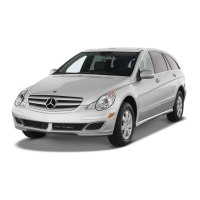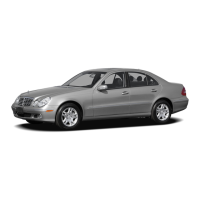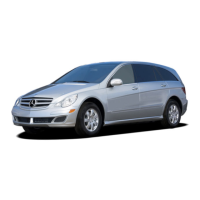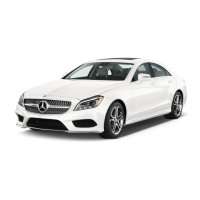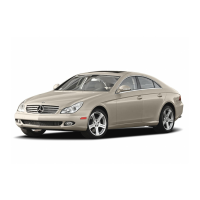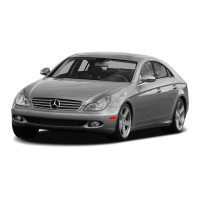Driving systems
132
X
Press the s button to call up the most
recently dialled number in the redial mem-
ory.
X
Press the j
or k button to select the
desired name or number.
X
Press the s button to start dialling.
Driving systems
Your vehicle's driving systems are described
on the following pages:
R
Cruise
control, Distronic* and Speedtronic,
which you can use to control the speed of
the vehicle
R
HOLD, which makes pulling away easier,
particularly on steep uphill gradients
R
Vehicle level setting and Airmatic DC*,
which can be used to adjust your vehicle's
chassis
R
Parktronic*, which assists you in parking
and manoeuvring
The ABS, BAS, adaptive brake lights, ESP
®
,
EBV (electronic brake-power distribution) and
ADAPTIVE BRAKE driving safety systems are
described in the "Driving safety systems" sec-
tion (Y page 57).
Cruise control
Cruise control maintains a constant road
speed
for you. It brakes automatically in order
to avoid exceeding the set speed. On long and
steep downhill gradients, especially if the
vehicle is laden, you must select shift range
1, 2 or 3 in good time. In this way you will
make use of the braking effect of the engine,
which relieves the load on the brake system
and prevents the brakes from overheating
and wearing too quickly.
G
Risk of accident
Do not change down for additional engine
braking on a slippery road surface. This
could cause the drive wheels to lose their
grip and the vehicle could skid.
Use
cruise control only if road and traffic con-
ditions make it appropriate to maintain a
steady speed for a prolonged period. You can
store any road speed above 30 km/h.
G
Risk of accident
Cruise control
cannot take account of road
and traffic conditions.
Always pay attention to traffic conditions
even when cruise control is activated.
Controls
* optional
219_AKB; 2; 4, en-GB
mkalafa,
2007-11-13T09:28:36+01:00 - Seite 132

